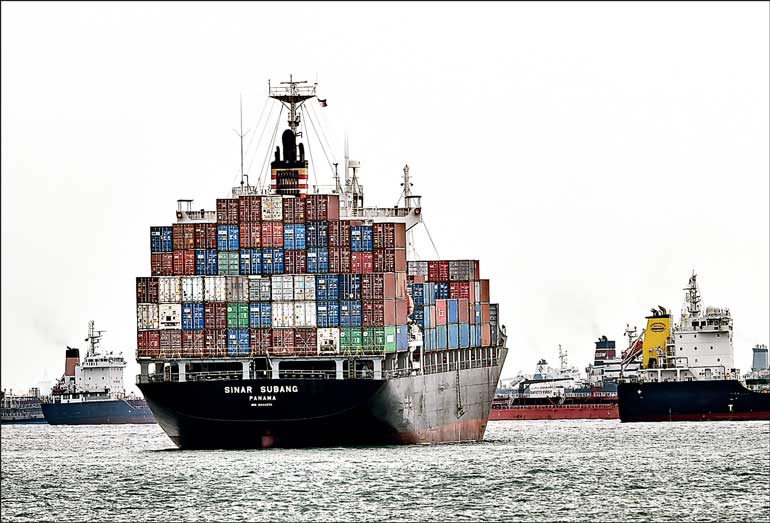Monday Apr 21, 2025
Monday Apr 21, 2025
Monday, 6 September 2021 00:02 - - {{hitsCtrl.values.hits}}

LONDON (AFP): Global sea freight was severely disrupted by the COVID crisis but is now recovering and prompting a boom new container ship orders as the industry grapples with a shortage of vessels.
Shipping companies, buoyed by soaring freight prices, are splashing out cash on expanding their fleets.
New shipping capacity is now forecast to hit a record-matching level by 2023, steaming ahead as the post-pandemic recovery gathers speed.
“The container ship order book is booming,” said Italian maritime brokerage Banchero Costa.
Orders have been placed for at least 276 new vessels in the first seven months of this year, which would add slightly more than 10% capacity to the large global container fleet as of 2020, according to data it provided.
However, it takes at least two years to build a new ship, so the market will remain overheated in the short term.
Banchero Costa expects only modest 3% year-on-year growth in shipping capacity in 2021 and 2022.
Freight prices have meanwhile surged in recent months, sparking a major shortage of vessels to meet runaway demand.
The Freightos Baltic Index of international shipping prices shows that rates for the route from China to the West Coast of North America have gone up by more than five times in one year.
“Every single vessel that can float is in deployment right now” by the industry, said Danish consultancy Sea-Intelligence Head Alan Murphy.
COVID had brought global shipping to a virtual standstill in the initial stages of the pandemic.
Yet demand for sea cargo transportation has grown strongly since mid-2020 and especially this year.
This growth “should continue until the first half of 2022,” French shipping giant CMA-CGM predicts.
The industry is now ready to splurge on new vessels following a decade of short supply.
The world’s largest container carrier, Danish giant AP Moller-Maersk, saw its net profit jump to $ 3.71 billion (3.14 billion euros, 2.7 billion) in the second quarter of 2021, up 30% on the full-year figure for 2020.
France’s CMA-CGM meanwhile logged a second-quarter net profit of about $ 3.5 billion, twenty-five times more than the same period last year.
“The strong rebound of the global economy has resulted in unprecedented demand for transportation and logistics services,” said CMA-CGM Chief Executive Rodolphe Saade.
CMA-CGM has meanwhile ordered 22 new container ships, expected to launch in 2023 and 2024.
The company will receive only 14 new ships this year.
Second-hand ships are also in demand with CMA-CGM adding a total of 32 such vessels this year.
Such expansion comes despite the fact that the market was depressed before the pandemic “due to overcapacity,” said Murphy, questioning what the effect will be of a massive increase in new ships from 2023.
However, he said a reduction in the number of leading players and new environmental legislation should make it possible for the sector to absorb these new capacities without damaging its business.
A planned environmental measure to limit speed, backed by France at the International Maritime Organization (IMO), means that more ships could be required just to service old levels of demand.
Carrying capacity will also be reduced because cleaner fuels in some newly-built vessels need new tank storage.
At the same time, ships whose scrapping has been delayed will also need to be replaced.
Banchero Costa said this means that while the number of ships scrapped this year will be one of the lowest since 2011, but by 2023, the number of discarded ships will be among the highest in recent years.
